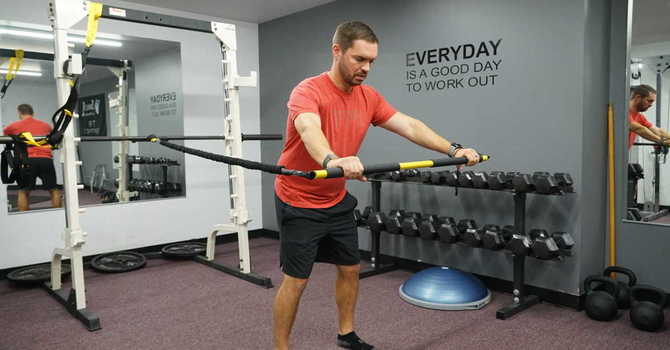The last power source we like to develop is wrist and elbow power. Wrist release speed has been shown to be very important in adding power to the swing. The wrist can actually create power in 3 different directions. It can extend, rotate and hinge. The most powerful golfers utilize all three planes for speed and power.
The elbow can also be used as another link in the chain of power and is commonly used by the long drive tour players. To incorporate the elbow link, the player will have to bend the elbow at the top of the backswing. This allows the elbow to flex and then rapidly extend into impact which decreases the moment of inertia for the trunk. As we discussed in “Upper Body Modifications for Power” the best analogy is a skater or a diver performing a spin. We all know that as the skater brings their arms in close to their body with their elbows bent they are able to spin faster. If the arms are extended out wide the rate of rotation will slow down due to the rapid increase in moment of inertia on the trunk. The biggest problem with this modification is it adds another source of possible inaccuracy.
Here are some examples of exercises we incorporate to develop elbow-wrist release power:
● Palm Press warm-up
● Forearm and grip strengthening
● Sword drills
● Impact bag pops
● Racquetball, badminton, squash
● Table tennis
● Med-ball chest passes
Here are some examples of how we would train for each:
- Absolute Strength - Grip Strength (see grip strength article)
- Explosive Speed - Badminton
- Speed Strength - Med-ball chest pass
- Opposite Side Power - Backhand shot
How do you know when to move from one training method to the next (absolute strength to explosive speed to speed-strength)? Well, this is going to be different depending on your age, training experience, fitness level, previous injuries, training frequency, goals, etc. We have different periodization schedules depending on goals, linear and non-linear. Linear periodization is what most of you may have seen before; 4-8 weeks in each phase and then move to the next. In non-linear periodization, we incorporate some of each method in each phase but have a focus during each phase.
Training volume is going to vary and we always stress the quality of movement over trying to hit a certain number of sets and reps. In general, you can start with these parameters for power:
● Repetitions - Less than 5 (usually 3-5)
● Sets - 5+
● Rest - 2-6 minutes between sets
● Tempo - AS FAST AS POSSIBLE
Always make sure you are physically capable of performing these exercises before starting a program. It is best to be screened by a professional so modifications can be made to certain exercises if necessary. This will not only help prevent injuries but will also allow you to maximize your potential with each exercise.




